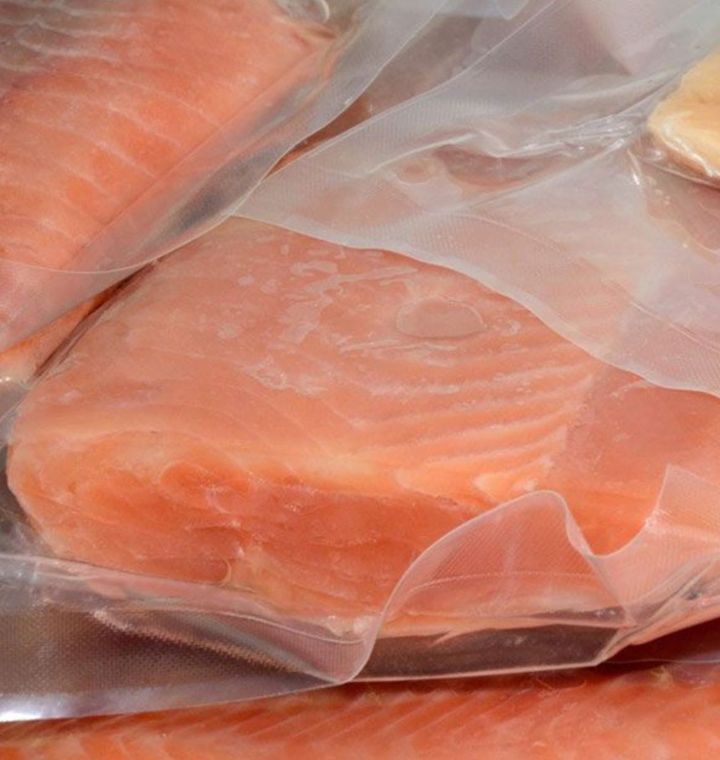Frozen fish in vacuum-sealed packaging might seem like the most convenient option when browsing through the frozen food section at your local grocery store. They’re easy to store, portioned for convenience, and keep the fish fresh longer by preventing moisture loss. However, there’s more to this packaging than meets the eye, and it’s crucial to understand why you should never thaw frozen fish in vacuum-sealed packaging. Let’s dive into the details.
The Health Risk Hidden in Vacuum-Sealed Fish

While vacuum-sealed packaging, also known as Reduced Oxygen Packaging (ROP), has its benefits in extending shelf life and preserving the fish’s quality, it comes with a hidden risk that many consumers may not know about—botulism. Botulism is a rare but serious illness that you could inadvertently expose yourself to if you thaw your fish improperly.
So, why is botulism such a concern? To fully grasp the risk, we need to first understand what botulism is and how it develops.
What Is Botulism?
According to the Centers for Disease Control and Prevention (CDC), botulism is a “rare but serious illness caused by a toxin that attacks the body’s nerves.” Initially, symptoms may include muscle weakness, but in severe cases, it can lead to difficulty breathing and even death.
While botulism is most commonly linked with improperly canned goods, it can also develop in vacuum-sealed packaging, such as the type used for frozen fish. The root cause? A bacteria called Clostridium botulinum.
Why Does Botulism Develop in Vacuum-Sealed Packaging?
Here’s where things get tricky. Clostridium botulinum is an anaerobic bacterium, which means it thrives in low-oxygen environments—exactly the conditions created by vacuum-sealed packaging. When frozen fish is thawed at temperatures above 38°F (3°C) and left in its packaging, these bacteria can produce spores that release the toxin responsible for botulism.
The combination of a lack of oxygen and an increase in temperature provides the perfect breeding ground for the bacteria to grow and produce the harmful toxin. This is why it’s critical to avoid thawing your vacuum-sealed fish without first removing it from the packaging.
How to Prevent Botulism When Handling Frozen Fish
Fortunately, avoiding botulism when handling frozen fish is simple as long as you follow the right steps. Here are some effective tips to prevent this health hazard:
1. Properly Store Frozen Fish
Storage is key to preventing botulism. Always ensure that your vacuum-sealed frozen fish is stored at the correct temperature. The risk of botulism increases dramatically at temperatures above 38°F, so it’s crucial to keep your freezer below this temperature. Many home refrigerators may fluctuate above this threshold, so it’s a good idea to regularly check your freezer temperature with a thermometer.
2. Remove Fish from Packaging Before Thawing

The most important step you can take to prevent botulism is to remove the fish from its vacuum-sealed packaging before thawing. By doing so, you’re exposing the fish to oxygen, which stops the anaerobic bacteria from growing and producing toxins. The moment the fish starts to thaw, remove it from its packaging and place it in a covered dish or on a plate in the refrigerator.
3. Follow the Seller’s Thawing Guidelines
Fish sold in vacuum-sealed packaging often comes with specific thawing guidelines from the seller. Always follow these instructions to ensure your fish remains safe for consumption. Keep in mind that vacuum-sealed fish is not shelf-stable, so it requires refrigeration even before thawing.
Best Practices for Buying, Storing, and Thawing Frozen Fish
Beyond the basic rules of handling frozen fish safely, there are a few additional best practices to follow when it comes to buying, storing, and thawing.
1. Check Packaging Before Buying

Before you even make your purchase, be sure to inspect the packaging. Avoid buying frozen fish that shows signs of damage, such as tears in the packaging or the presence of frost and ice crystals. Frost on the fish may indicate that it has already been exposed to fluctuating temperatures, which increases the risk of spoilage or contamination.
2. Store Your Fish Properly
Once you’ve bought your fish, make sure you store it properly. Freezers should ideally be set at 0°F (-18°C) or lower to keep the fish frozen solid and safe from bacterial growth. If your freezer temperature is set too high, you could unknowingly be creating an environment where harmful bacteria like Clostridium botulinum can thrive.
3. Thaw Gradually for Best Results
When it’s time to thaw your frozen fish, the safest method is to do so gradually in the refrigerator. Remove the fish from its vacuum-sealed packaging and place it in a covered dish, allowing it to thaw overnight. Avoid thawing your fish on the countertop or in warm water, as these methods promote the growth of bacteria, increasing the risk of foodborne illness.

Conclusion: Take Simple Steps for Safe Fish Consumption
While vacuum-sealed fish offers convenience and extends shelf life, it also presents a potential health risk if not handled properly. Botulism is a rare but serious illness that can develop when frozen fish is thawed in its original packaging. The good news? Avoiding this risk is easy. Always remove your fish from vacuum-sealed packaging before thawing, store it at safe temperatures, and follow proper thawing guidelines.
By following these simple yet effective tips, you can enjoy the convenience of vacuum-sealed frozen fish without compromising your health. Stay safe, stay informed, and always handle your food with care.


